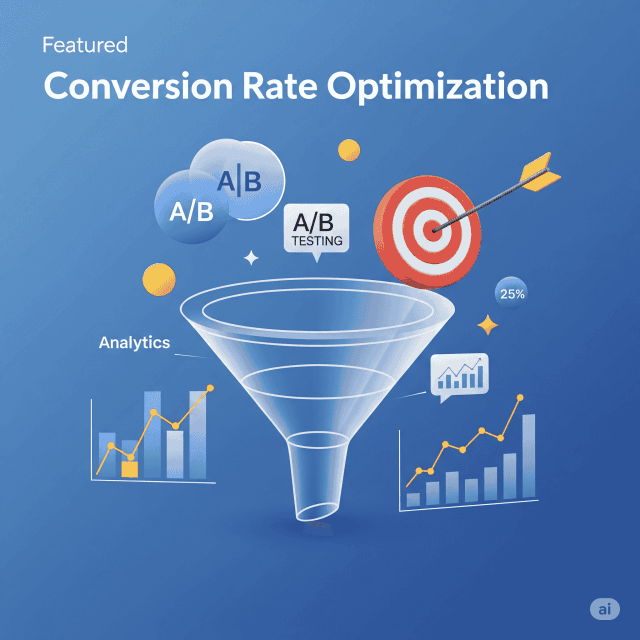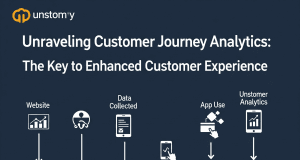Conversion Rate Optimization (CRO) is a crucial aspect of digital marketing that focuses on increasing the percentage of visitors to a website who take desired actions, such as making a purchase, signing up for a newsletter, or filling out a contact form. This guide provides a comprehensive overview of techniques and tools to enhance your CRO efforts.
What is Conversion Rate Optimization?
CRO involves analyzing user behavior on your website and employing strategic changes to enhance user experience, ultimately leading to higher conversion rates. A higher conversion rate improves the return on investment (ROI) of your marketing efforts, making it a vital focus for businesses of all sizes.
Why is CRO Important?
- Increased Revenue: Higher conversion rates lead directly to increased sales without the need for additional traffic.
- Better User Experience: Improving the flow and usability of your site enhances customer satisfaction.
- Cost-Effectiveness: Optimizing existing traffic is often more cost-effective than acquiring new users.
- Informed Decision-Making: CRO relies on data, allowing businesses to make informed decisions based on user behavior analytics.
Key Techniques for Effective CRO
1. A/B Testing
A/B testing, or split testing, involves comparing two versions of a webpage (A and B) to see which performs better. This method helps identify the impact of changes, such as headlines, images, and calls to action (CTAs).
Best Practices:
- Test one element at a time for clear results.
- Use sufficient sample size for statistical relevance.
- Analyze results and implement improvements based on data.
2. Analyzing User Behavior
Use tools like heatmaps and session recordings to understand how users navigate your site, what draws their attention, and where they experience obstacles.
Tools:
- Hotjar: Provides heatmaps and session recordings for insights on user behavior.
- Crazy Egg: Offers heatmapping and A/B testing functionality.
3. Optimizing Landing Pages
Your landing page is crucial for conversions. Ensure it aligns with your ad or link source and has a clear, compelling CTA.
Tips:
- Maintain a clear, concise message.
- Use engaging visuals and streamlined design.
- Include trust signals like testimonials and security badges.
4. Enhancing Call-to-Action
CTAs guide users toward conversions and should be clear, compelling, and easy to find.
Best Practices:
- Use action-oriented language (e.g., "Start Free Trial" vs. "Submit").
- Experiment with button colors, sizes, and placements.
- Limit the number of CTAs per page to avoid overwhelming users.
5. Improving Website Speed
A slow-loading website can be a significant barrier to conversions. Ensure your site loads quickly across devices.
Tools for Testing Speed:
- Google PageSpeed Insights: Provides insights and recommendations for improving site speed.
- GTmetrix: Analyzes your site speed and offers suggestions.
6. Personalization
Tailoring user experiences based on behavior, demographics, or past interactions can significantly enhance conversion rates.
Strategies:
- Use personalized recommendations based on user behavior.
- Implement dynamic content that changes based on the user’s profile.
7. Mobile Optimization
With an increasing number of users browsing and shopping on mobile devices, ensure your website is mobile-friendly.
Tips:
- Use responsive design to ensure your site works well on various screen sizes.
- Simplify navigation and reduce loading times for mobile users.
Essential Tools for Conversion Rate Optimization
1. Google Analytics
Google Analytics provides comprehensive data about user interactions on your site, helping you identify drop-off points in the conversion funnel.
2. Optimizely
A powerful A/B testing and experimentation platform that allows you to create, launch, and analyze tests on your website.
3. Unbounce
A dedicated landing page builder that facilitates the creation of high-converting landing pages without the need for coding knowledge.
4. VWO (Visual Website Optimizer)
This tool offers A/B testing, multivariate testing, and analytics capabilities to help optimize every aspect of your website.
5. BuzzSumo
Great for content marketing strategies, BuzzSumo helps identify trending topics and influencer partnerships that can drive traffic.
Measuring Success in CRO
Successful CRO is not just about increasing conversion rates; it’s also essential to track key performance indicators (KPIs):
- Conversion Rate: The percentage of visitors who complete a desired action.
- Bounce Rate: The percentage of visitors who leave after viewing only one page.
- Average Order Value (AOV): The average amount spent each time a customer places an order.
- Customer Lifetime Value (CLV): The total revenue expected from a customer during their relationship with your business.
Conclusion
Conversion Rate Optimization is a continuous process of testing, analyzing, and adjusting website elements to improve user experience and drive conversions. By employing these techniques and utilizing the recommended tools, businesses can enhance their online performance and achieve significant growth. Remember that CRO is an ongoing journey, and consistently monitoring performance while making data-driven enhancements is the key to sustained success.







